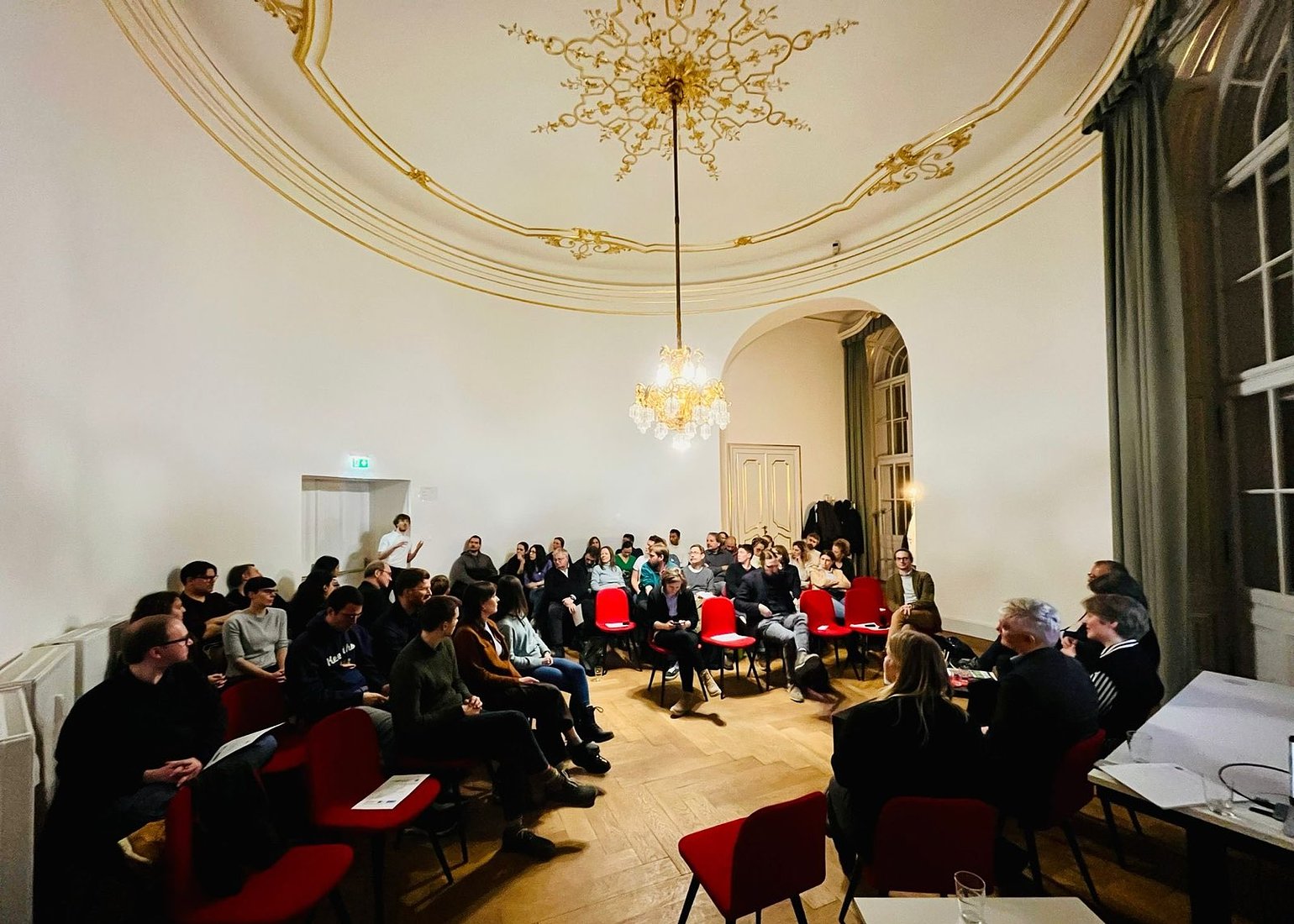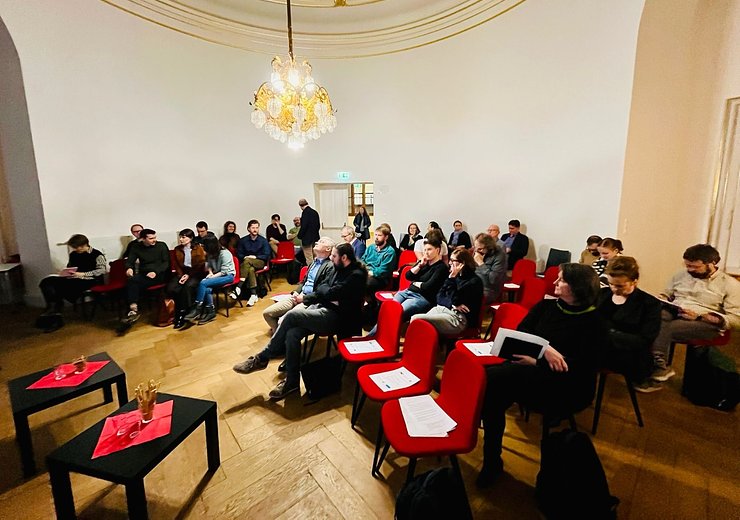DIGILINGDIV Project Kick-off
On January 27, DIGILINGDIV celebrated its official project start with a kick-off Event at the Hofburg.

Picture: Hannes Fellner
On January 27, Disentangling effects of digitization on linguistic diversity (DIGILINGDIV) celebrated its official project start at the Hofburg in Vienna. DIGILINGDIV explores the impact and effects of digitization on language diversity, and it is funded by the Vienna Science and Technology Fund (WWTF). The event was opened by Andreas Baumann, who leads the project together with Hannes Fellner and Julia Neidhardt. His opening words were followed by welcome addresses from Michael Strassnig (WWTF), and Allan Hanbury, Professor and Head of the Research Unit Data Science at TU Wien Informatics.
Andreas Baumann introduced the project and its goals to the audience and set the stage for a panel discussion which was moderated by Julia Neidhardt and Hannes Fellner. The panelists Martin Fritz (Secretary-General of the Austrian Commission for UNESCO), Alíz Horváth (Central European University), Barbara Soukup (University of Vienna), and Erich Prem (TU Wien/University of Vienna) explored major themes and topics of the project.
The discussions focused on the potential benefits and challenges of using technology to preserve endangered languages, and key themes included identity, power, and social justice in language use. The role of digitization in language preservation was a central topic. Digital tools like archives, documentation platforms, and machine translation can aid in preserving and promoting languages. However, the dominance of English in the digital space presents a challenge, as it marginalizes smaller languages, creating biases in representation. This dominance risks pushing endangered languages further into the background, especially as younger generations increasingly adopt major languages for digital communication. Language was also discussed as a vital part of identity. Many communities see their native languages as symbols of cultural heritage and political autonomy. The standardization of languages often reflects the power of dominant groups, and this raises questions about whose language is preserved and taught. Additionally, the shift towards digital platforms has influenced younger generations’ language preferences. The event concluded by framing language as essential for cultural and social inclusion. The event highlighted the potential and challenges of digitization in preserving linguistic diversity. While technology offers tools to document and promote endangered languages, it also risks reinforcing the dominance of major languages.
Disentangling effects of digitization on linguistic diversity is funded by the Vienna Science and Technology fund (WWTF) and is set to run until 2027.
If all of this got you curious about Julia Neidhardt, you can read more about her research and involvement in the Digital Humanism initiative in our #5QW interview series.
About DIGILINGDIV
About 7000 languages are spoken around the globe, constituting a remarkable extent of linguistic and cultural diversity. However, research has shown that linguistic diversity has decreased over the past couple of decades and is vanishing rapidly, an observation that cannot simply be pinpointed to a single factor. Large-scale studies on language endangerment and linguistic diversity have already accounted for environmental and socio-economic effects. The project “Disentangling effects of digitization on linguistic diversity” adds to this research by considering the effect of digitization on linguistic diversity. The approach of the project unfolds in three work packages. In the first one, the effects of measures associated with digitization on linguistic diversity in the non-digital sphere are studied. Country-level estimates of digitization, linguistic diversity, and other covariates, are correlated, crucially also considering the diachronic dimension. In the second work package, the project focuses on linguistic diversity in the digital sphere. Country-level estimates of linguistic diversity based on social-media data and a diachronically layered web corpus are derived, so that developments of digital linguistic diversity can be examined on a global scale. In the third work package, the project zooms into a constrained region, Québec (CA). In a mixed-methods approach, the project investigates the relationship between digitization and linguistic diversity in that region by exploiting regional (digital) data and results from a qualitative survey on language choice and attitudes.
Curious about our other news? Subscribe to our news feed, calendar, or newsletter, or follow us on social media.




